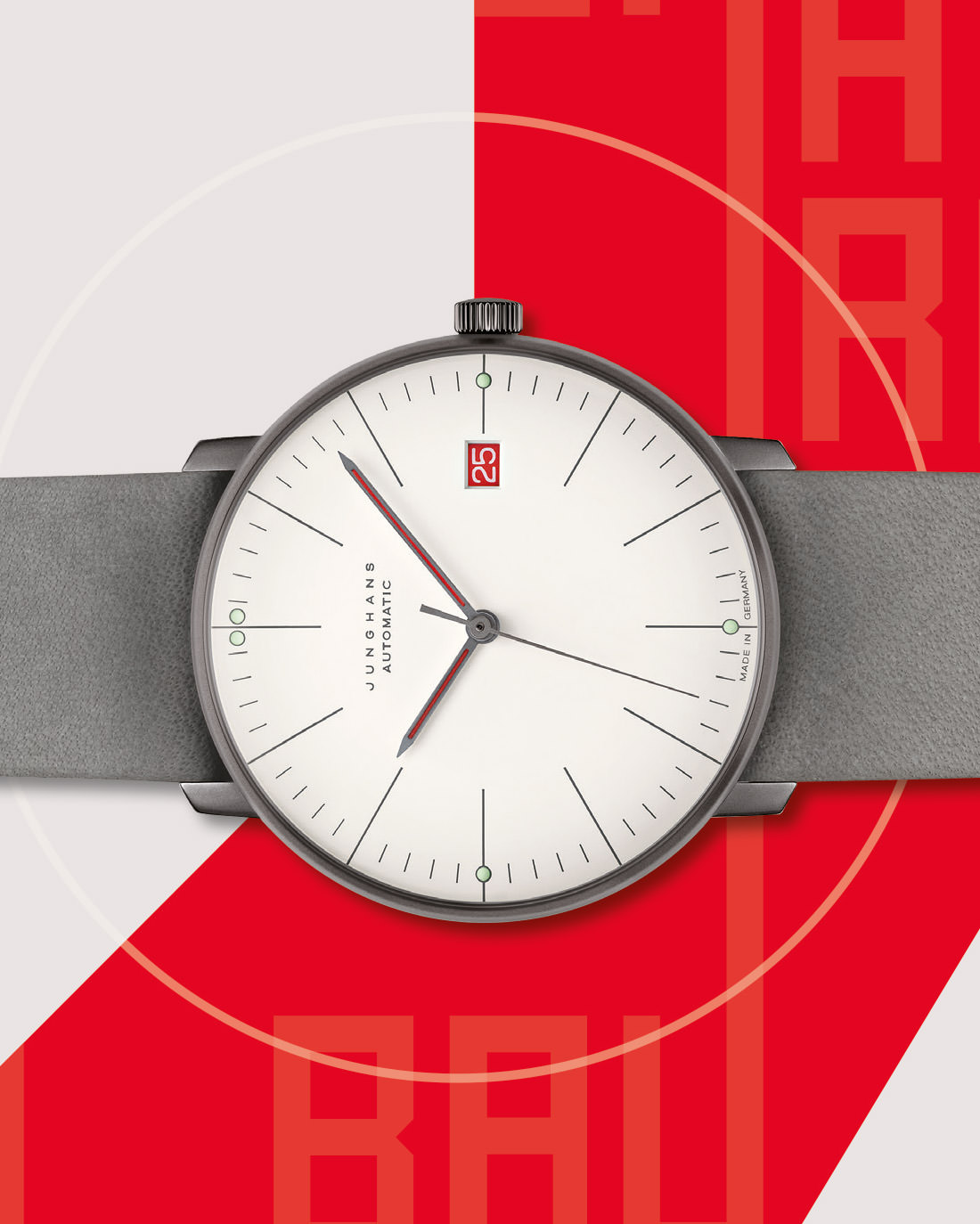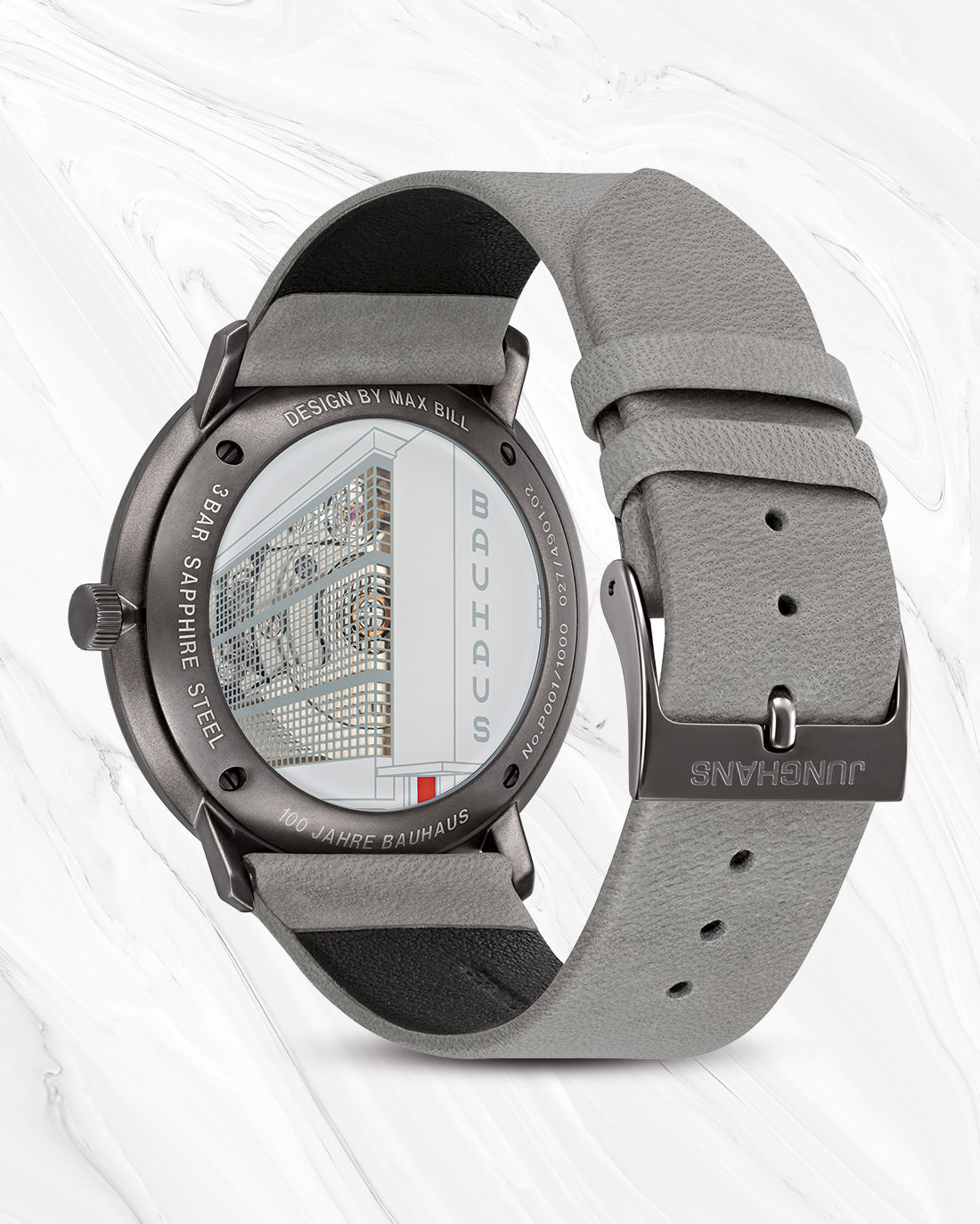ReviewAn Ode To A Design Powerhouse: The Junghans Max Bill 100 Years Bauhaus
Nuance and attention to detail in the subtlest, yet most impactful way, form the essence of the Junghans Max Bill 100 Years Bauhaus—a watch that commemorates 100 years of the Bauhaus school of art and exemplifies its ideologies beautifully
May We Recommend
‘Clean’, ‘clear’ and ‘minimal’ are words that come to mind when you look at a watch from Junghans’ Max Bill collection. However, the description of the visual and its aesthetic appeal are not mutually exclusive in any Junghans Max Bill watch. The design, though minimal, is not without its nuances and details—all of which create the impact that the products have on their beholder. Each element, every detail has a purpose, and the form lent to all of it follows the function it has to perform. This is the basic principle of design that this Junghans Max Bill watch follows, and also that which largely influences all of Junghans’ product offerings as well. The foundation of this ideology was laid 100 years ago when Germany’s Bauhaus school of art was established, and the winds of change that came with it would be felt all over the globe.

The Bauhaus Story
The post-war era encouraged a lot of creativity but there was also a demand for simplicity. So, when the Bauhaus school was founded by one Walter Gropius in 1919, with a streamlined vision for simpler, yet impactful design, it was a resounding success and helped activate the creative genius in many. Max Bill was one such individual, who studied at Bauhaus, went on to become an architect and designer in Switzerland, and also one of the most significant products of the school.
His work was a major source of inspiration for Junghans, among all principles of the Bauhaus school. They named a collection after Bill and, this year, it naturally became a big part of the brand’s commemoration of 100 years of the Bauhaus school—in the form of this elegant timepiece, the Junghans Max Bill 100 Years Bauhaus.
Building On The Details
Extremely pleasing to look at, the serene appearance of this 1,000-piece limited edition watch is thanks to its nuance in the face of sheer simplicity. Of course, the silver-plated white dial and the elongated hour markers lend a refined appearance. Those are the more obvious elements, but what creates dimensional appeal is the domed glass in sapphire crystal and a dial that’s ever so slightly convex, so that it only creates visual impact without a beholder even specifically noticing this detail.
Another subtle element is the red-backed date display at three o’clock, which is inspired by the distinctive red door on the building of the Bauhaus school in Dessau, Germany. The building, with its red door, is depicted on the caseback. It is printed on the mineral crystal, which is transparent only through the windows of the building. This is yet another design detail that is extremely commendable. And it turns out that this is also the first Max Bill Automatic watch that showcases the self-winding movement beating within, through the school’s windows. All this is set in a modest, 38mm steel case, PVD-coated in an anthracite grey, which creates flawless visual harmony with the soft leather strap, in a hue also inspired by the Bauhaus building.
There is literal inspiration from the physical Bauhaus school, but paired with the nuance that its principles taught the world. The school may have shut down in 1933 (for political reasons), but its teachings live on through designs like this, which continue to inspire artists and visionaries of the future.
The Bauhaus Building Today
The Bauhaus school was shut down in the 30s, under pressure from the National Socialists, after which, the Bauhaus complex in Dessau was bombed during World War II. It was somewhat restored in 1972, but extensive renovation took place after it was awarded UNESCO World Heritage status—a facelift that was completed in 2006. Today, it is a centre for experimental design, research and education, owing to the Bauhaus Dessau Foundation, founded in 1994, which works towards preserving and taking forward the Bauhaus legacy.
Click here to read more about the Bauhaus design philosophy and how it impacts contemporary design in watches















